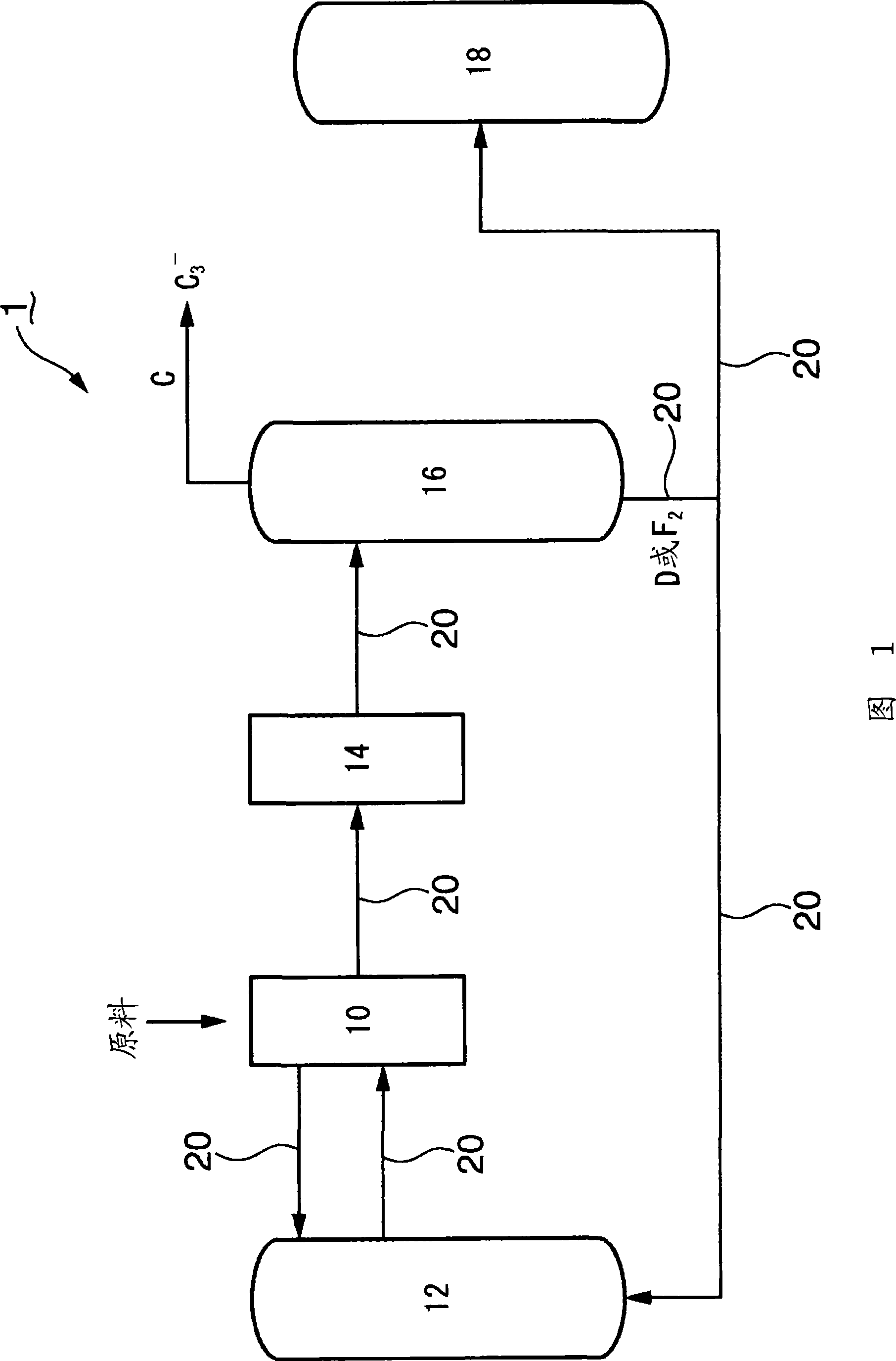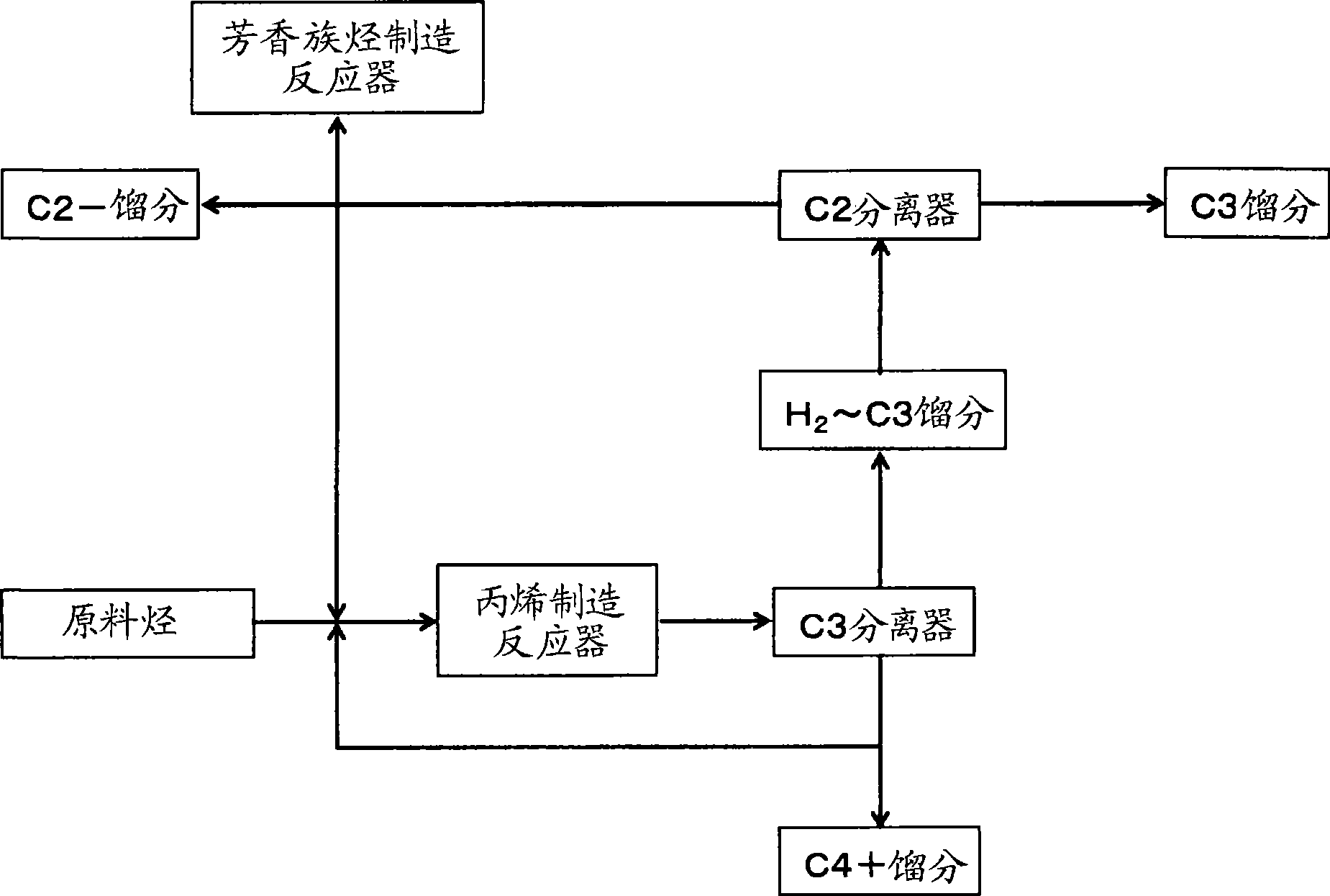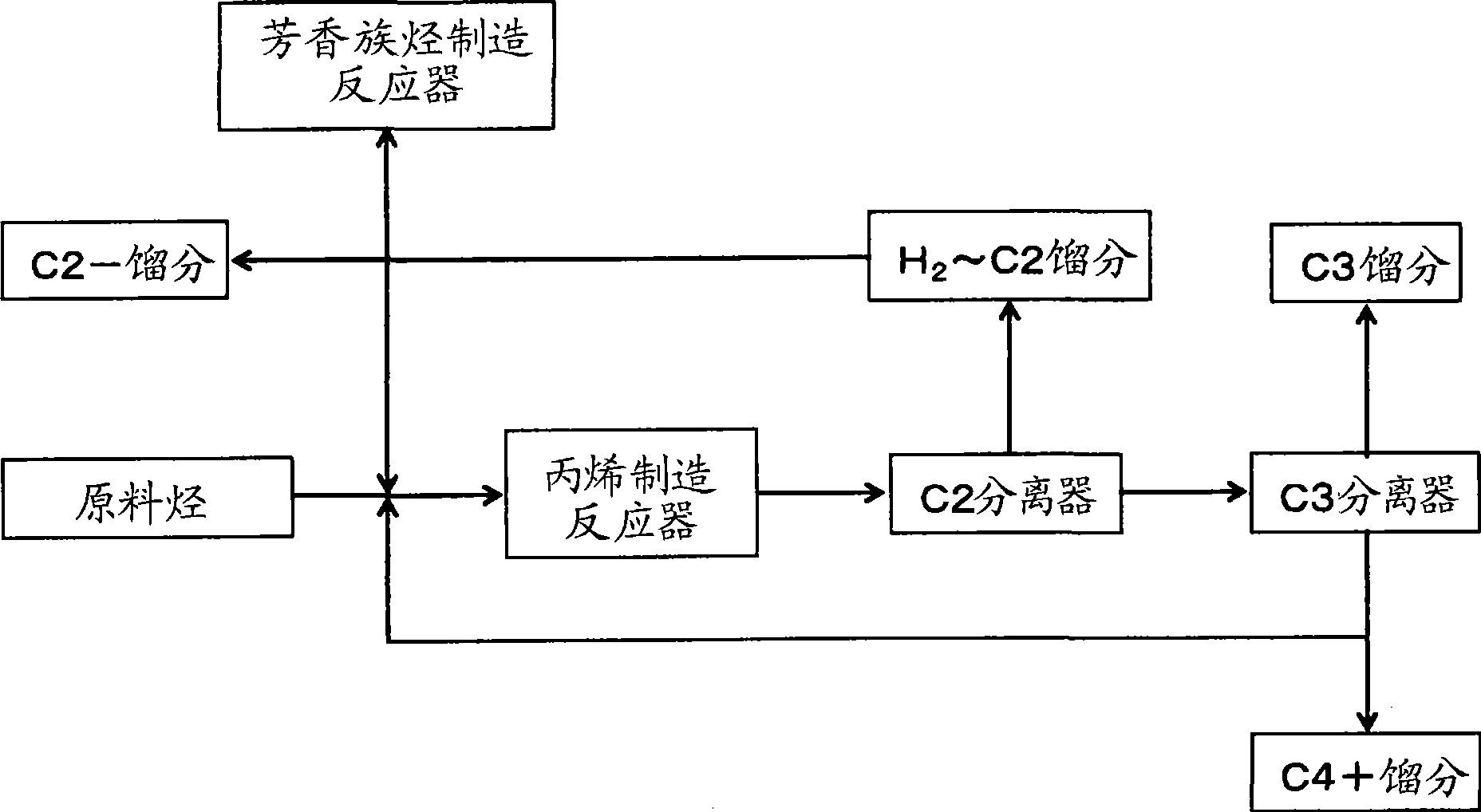Process for production of propylene and aromatic hydrocarbon, and apparatus for the process
A manufacturing method and technology of aromatic hydrocarbons, applied in chemical instruments and methods, condensation hydrocarbon production with dehydrocarbons, hydrocarbon cracking hydrocarbon production, etc., can solve coking degradation, no mention of zeolite, unsolved coking degradation, etc. question
- Summary
- Abstract
- Description
- Claims
- Application Information
AI Technical Summary
Problems solved by technology
Method used
Image
Examples
Embodiment 1
[0254] Make SiO 2 / Al 2 O 3 Extruded product of Na-type ZSM-5 with a molar ratio of 1200 (containing 30% by mass SiO 2 A binder, 1.6 mmφ, purchased from Nikki Universal Co., Ltd., Japan) was dispersed in a 0.02N silver nitrate aqueous solution (10cc / g-zeolite molded body), and ion exchange treatment at 60°C for 1 hour was repeated twice. Then, it was filtered, washed with water, and dried to prepare a catalyst A-1. The amount of Ag of the catalyst A-1 measured by fluorescent X-ray analysis was 0.22% by mass.
[0255] The catalyst A-1 was filled in a Hastelloy C reactor with an inner diameter of 27 mmφ, and steamed for 5 hours under the conditions of a temperature of 650°C, a steam flow rate of 214 g / hr, a nitrogen flow rate of 400 NL / hr, and a pressure of 0.1 MPaG. The amount of protons of the catalyst A-1 after the steaming treatment was determined by the liquid-phase ion exchange / filtrate titration method, and it was 0.002 mmol / g. A reactor made of Hastelloy C with an inner diam...
Embodiment 2
[0265] A reactor made of Hastelloy C having an inner diameter of 27 mmφ was filled with 160 g of the same steam-treated catalyst A as in Example 1.
[0266] Using the C4 raffinate-2 shown in Table 1 as a raw material, at a reaction temperature of 550°C, the supply rate of C4 raffinate-2 was 220.3g / hr, and the supply rate of circulating C4+ fraction was 139.7g / hr (WHSV=6hr -1 ), the steam supply rate is 108g / hr, and the reaction pressure is 0.1MPaG. The propylene production reaction is carried out, and the obtained reaction product is supplied to the distillation column and separated into H 2 ~C3 fraction and C4+ fraction, about 56% of the C4+ fraction is recycled to the reactor.
[0267] After the propylene production reaction was continued for 2 days, the catalyst regeneration treatment was performed under the following conditions. The regeneration temperature is 500-550°C, the regeneration pressure is 0.5MPaG, the nitrogen + air flow rate is 1008NL / hr, the oxygen concentration i...
Embodiment 3
[0271] In addition to the supply of 279.1 g / hr of C4 raffinate-2 and 80.9 g / hr of circulating C4+ fraction (WHSV=6hr -1 ). About 33% of the C4+ fraction was recycled outside the reactor, and the propylene production reaction was carried out under the same conditions as in Example 2. Table 1 shows the yield (mass%) relative to C4 raffinate-2. In addition, the propylene yield with respect to the C4 raffinate-2 2 hours after the start of the reaction was 33.24% by mass, and 48 hours after the start of the reaction was 31.35% by mass. The value obtained by dividing the amount [mass %] of the aromatic hydrocarbons having 6 to 8 carbon atoms produced in the reactor by the hydrocarbon partial pressure [MPa] is 4.8.
[0272] The aromatic hydrocarbon production reaction was carried out under the same conditions as in Example 1, except that the raw material was the C4+ fraction obtained in Example 3. The yield of aromatic hydrocarbons having 6 to 9 carbon atoms was 46.3% by mass 8 hours aft...
PUM
| Property | Measurement | Unit |
|---|---|---|
| particle diameter | aaaaa | aaaaa |
| particle diameter | aaaaa | aaaaa |
| conversion efficiency | aaaaa | aaaaa |
Abstract
Description
Claims
Application Information
 Login to View More
Login to View More - R&D
- Intellectual Property
- Life Sciences
- Materials
- Tech Scout
- Unparalleled Data Quality
- Higher Quality Content
- 60% Fewer Hallucinations
Browse by: Latest US Patents, China's latest patents, Technical Efficacy Thesaurus, Application Domain, Technology Topic, Popular Technical Reports.
© 2025 PatSnap. All rights reserved.Legal|Privacy policy|Modern Slavery Act Transparency Statement|Sitemap|About US| Contact US: help@patsnap.com



